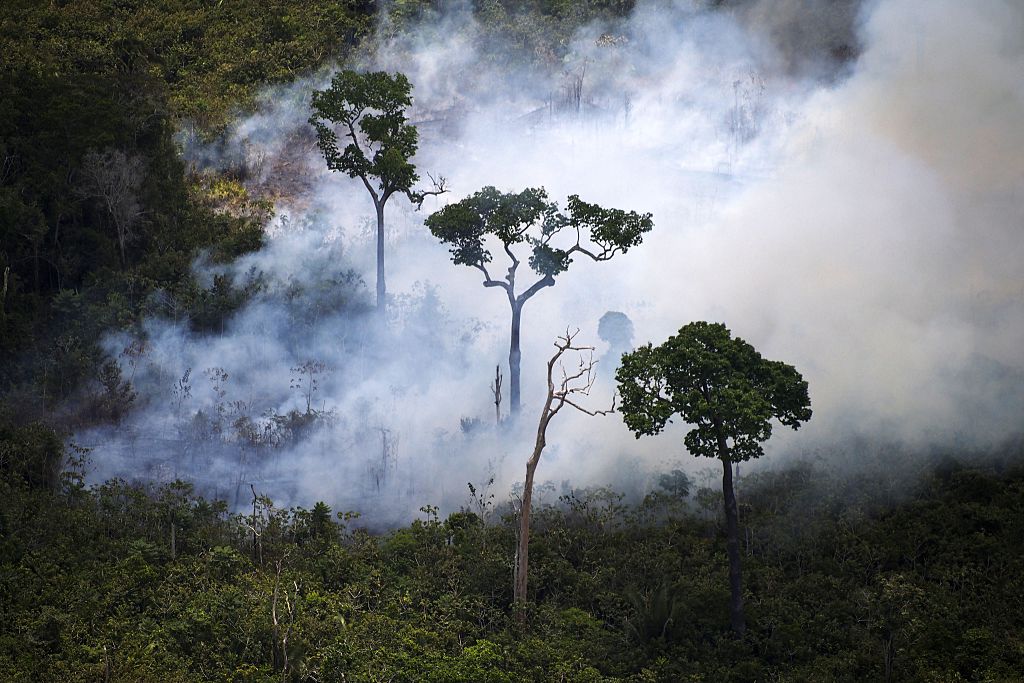
Illegal logging has a devastating environmental impact, blighting biodiversity and destroying a much-needed counterweight to carbon emissions. It is equally damaging to the 1.6 billion people whose livelihoods depend on forests and is one of the most lucrative forms of organised crime – second only to the drugs trade, according to one estimate.
Police agency Interpol estimates that the illegal timber business is worth up to $150bn a year and accounts for as much as 30% of annual production. In countries such as the Democratic Republic of Congo, it can be as high as 90%, according to think tank Chatham House. Earlier this year, an investigation by environmental campaign group Earthsight alleged that wood from protected forests ends up in rich countries’ furniture stores. Tackling ‘forestry crime’ could hardly be more urgent.
Rainforest Connection (RFCx), a US-based non-profit, has developed a new weapon in that fight: a system that analyses the sounds of the forest to detect deforestation in action. The system has been used in tropical forests across 16 countries, including Indonesia, Brazil and Cameroon, and is now being deployed as a way to protect endangered animal species. Tech Monitor spoke to RFCx to discover how it works.
Listening to the forest to prevent illegal logging
RFCx was founded in 2013 after conservation technologist Topher White noticed that rangers in the Indonesian rainforest spent more time tackling illegal logging than nurturing the local wildlife. The task is made all the more difficult by the density of tropical forests: this makes it hard to detect, and it can take days to reach the affected areas.
The breakthrough realisation was that sound could overcome these issues. “We realised that forests communicate with sounds,” says Chrissy Durkin, director of international expansion at RFCx. “Humans are very visual, we usually think about things in terms of how we see them, but forests are very dense and it’s hard to see very far in front of you. And so, all the species there communicate with sound. Sound is a great way to understand what’s happening within a forest.”
RFCx started by installing upcycled mobile phones to transmit the sounds of the forest, which would be analysed for evidence of illegal logging. It has since developed its own devices called ‘guardians’ that combine custom logic boards in a weatherproof box with solar panels, a directional antenna and a microphone. They are installed at the very top of the rainforest canopy and they can record the entire soundscape of the forest.

This data is then streamed to the cloud, where it is analysed by RFCx’s AI models to detect sounds such as chainsaws, vehicles, human voices, gunshots, or “anything that would let us know that there’s illegal logging, poaching or mining happening in the region,” says Durkin. “We can automatically generate an alert for those sounds.”
These alerts are sent to people on the ground, such as rangers, indigenous people and non-profits, through their mobile phones. The recipients can see the spectrogram of the alert, listen to it, and confirm or reject it, which in turn helps RFCx improve its AI algorithms.
“[The people on the ground] are able to decide how they want to respond, whether that’s creating an organised and planned intervention, checking out the situation on the spot or using the data for forensic evidence,” explains Durkin. “It makes it possible to inform actions rather than just patrolling.”
AI in the forest: from detection to prediction
The data obtained from the guardian devices not only makes monitoring vast areas of rainforest easier, it also makes the work of rangers or those on the ground safer as they can avoid stumbling into dangerous situations. Violent crime associated with illegal logging has been on the rise in recent years.
Even when rangers have detected illegal activity in a forest, it can still take them days to get to the spot where it is happening. This is why, in 2019, data systems provider corporation Hitachi Vantara approached RFCx to help it move from detection to prediction.
“The algorithms that they [RFCx] had developed internally detected anomalous sounds and then alerted rangers in the area to go investigate the unnatural noise,” says Joshua Siegel, global co-creation lead, IoT and analytics at Hitachi Vantara. “The fundamental shift that our data science team and our effort allowed them to do was focusing on the sounds of the forest. We developed what we call a bioacoustic signature.”

A bioacoustic signature is a representation of the sound that the animals in a forest collectively make in normal conditions. When they are disturbed – by a scout looking for the best areas for logging, for example – animals who are usually quiet will sound alarms, so any changes in this signature can be an early warning sign for logging.
“The algorithms that we developed detect those changes in the background bioacoustic signature of the forest and with 96% accuracy, give rangers five days advance notice on when those chainsaw events are going to occur,” explains Siegel.
Going beyond tracking illegal logging
Durkin says the RFCx team soon realised that this bioacoustic data could be used beyond preventing illegal logging in rainforests. “We’re able to analyse this data in a way that’s never been possible before,” says Durkin. “We can also map biodiversity and see how biodiversity is shifting due to climate change and an encroachment in a way that we’ve never been able to before.”
A few weeks ago, Durkin and her colleagues went to Chile to track Darwin’s foxes, an endangered species that lives on the Nahuelbuta National Park in the Araucanía Region. There are around 500 Darwin’s foxes left in Chile, 70 of which are in Nahuelbuta.
RFCx is using acoustic monitoring to track the foxes’ location. This in turn will inform how the land where they live should be restored and conserved to help the species thrive. As in the rainforests, the guardian devices are also running AI models to detect sounds of illegal activity that can alerts rangers and the local stakeholders of the project.
Durkin says that the real goal for RFCx is to install real-time acoustic monitoring stations in all of the world’s most important and threatened ecosystems. Doing so would allow conservationists and local populations to ensure that these areas remain protected and grant humanity a deeper understanding of biodiversity at scale.
Home page photo by Raphael Alves/AFP via Getty Images.






